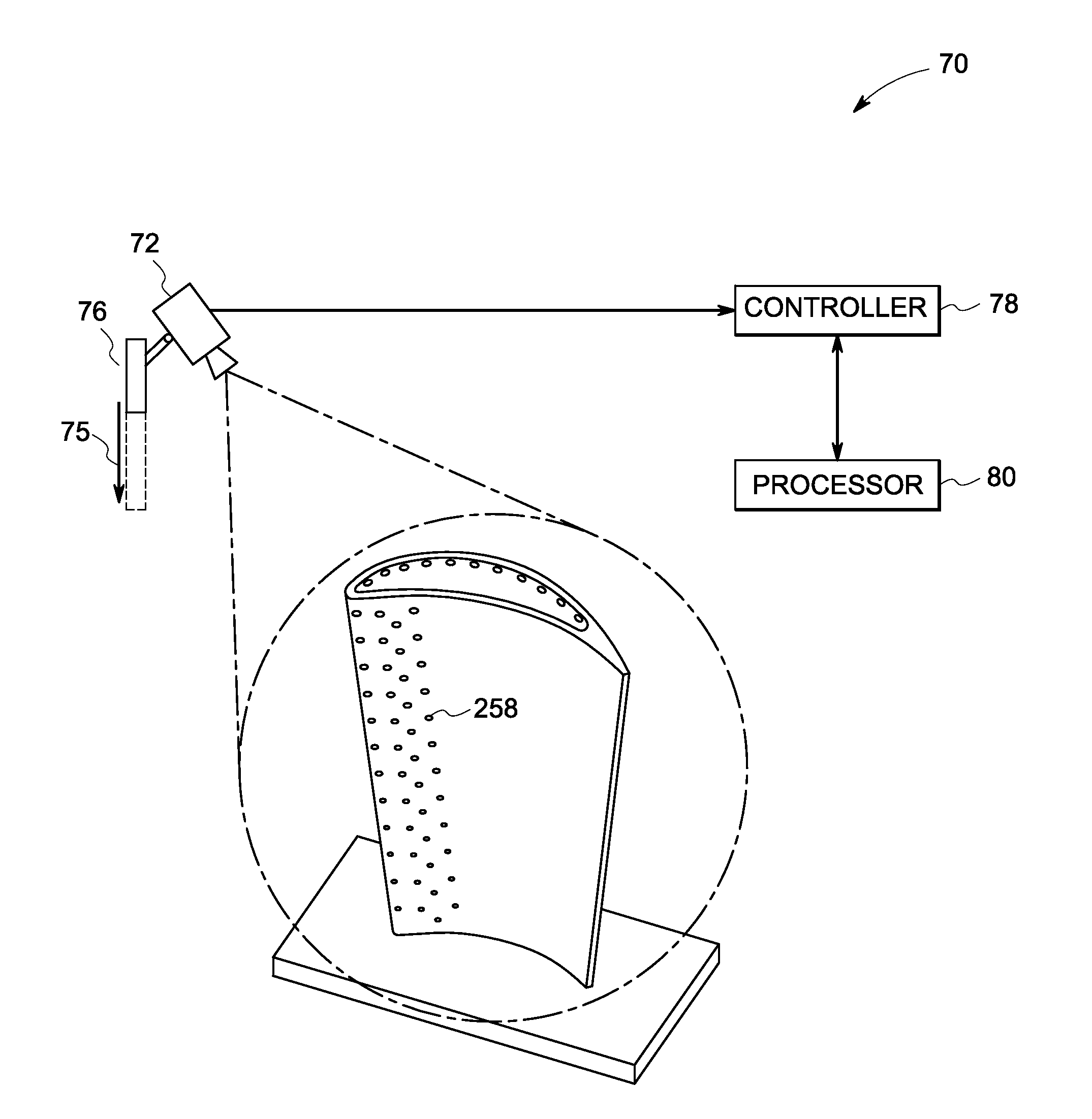Online systems and methods for thermal inspection of parts
a technology of thermal inspection and parts, applied in liquid fuel engines, instruments, machines/engines, etc., can solve the problems of reducing film effectiveness and/or thermal performance, time-consuming technique, and ignoring local or individual features or holes that are out of specification, and achieve satisfactory thermal performance of cooled parts
- Summary
- Abstract
- Description
- Claims
- Application Information
AI Technical Summary
Benefits of technology
Problems solved by technology
Method used
Image
Examples
Embodiment Construction
[0021]As described in detail below, embodiments of the invention are directed to online systems and methods for thermal inspection of one or more cooled parts during operation of an engine. Example ‘parts’ include equipment used in engine systems such as, but not limited to, turbine engines. As used herein, the term ‘online system and method’ refers to a system and method that inspects the parts during operation of an engine in a real environment such as, among others, a hot gas flowing over the part under real temperatures, real pressures and real hot gas characteristics. Further, the phrase “operation of an engine” should be understood to encompass any operation of the engine, including but not limited to start-up and steady state operation. As used herein, the term “cooled part’ refers to parts equipped with internal cooling passages and / or with film cooling holes and associated passages.
[0022]Turning to the drawings, FIG. 1 is an exemplary gas turbine engine 210 circumferentiall...
PUM
 Login to View More
Login to View More Abstract
Description
Claims
Application Information
 Login to View More
Login to View More - R&D
- Intellectual Property
- Life Sciences
- Materials
- Tech Scout
- Unparalleled Data Quality
- Higher Quality Content
- 60% Fewer Hallucinations
Browse by: Latest US Patents, China's latest patents, Technical Efficacy Thesaurus, Application Domain, Technology Topic, Popular Technical Reports.
© 2025 PatSnap. All rights reserved.Legal|Privacy policy|Modern Slavery Act Transparency Statement|Sitemap|About US| Contact US: help@patsnap.com



